In ancient times and to present day, the people of Hawai'i have used seabirds to find fish, for navigation and for clues to changes in weather.
What do I do if I’ve found a downed seabird?
Determine if it needs to be rescued: often young seabirds stay near their nests or burrows and should be left alone. These birds will not need to be rescued and no intervention is needed. If you are uncertain of whether the seabird needs help, please call the statewide hotline at (888) 256-9840.
If a bird is found unresponsive or in an insecure environment (i.e. on the side of the road, next to a building, etc.), it needs to be rescued. If the animal you have found is on O’ahu and you’ve called the statewide hotline at (888) 256-9840, HMAR will confirm if the animal needs assistance and then dispatch a responder to assist if possible.
Do not give food or water to the bird and do not leave any in the container you may have placed the animal into. Note the time and location of where you found the bird. If you have found more than one bird, please do not put more than one bird into a single container.
If possible, HMAR will transport the seabird to be evaluated and to receive medical care if needed. If it can be stabilized and released, this care will be provided. If longer-term care is needed, the animal will be transported to the appropriate facility.

Other things you can do to help Hawai'iʻs seabirds :
- Keep your cats indoors and your dogs on leash when near possible seabird nesting areas.
- Dispose of, or report, marine debris and entanglement hazards like derelict fishing gear and nets. To report these types of hazards, call (888) 4-DA-NETS (888-432-6387), or fill out the online form HERE.
- Do not drive on beaches or possible seabird nesting areas. Hike only on designated trails.
- If you live near the ocean, please turn off outdoor lights and close your curtains at night between September and end of December to reduce artificial light.
- Support controls on feral and invasive species such as feral cats, mongoose and feral pigs.
- Support climate change and sea level rise research and controls.
Here are some seabirds you may see:
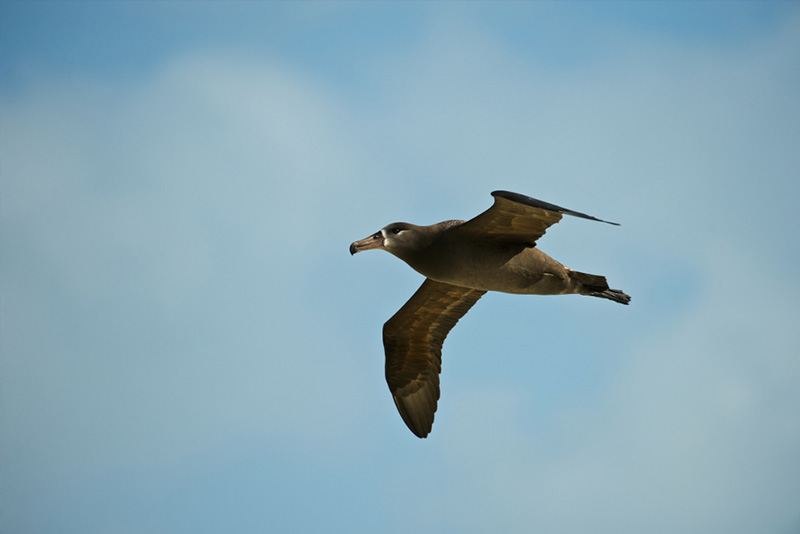
Black-footed albatross – Phoebastria nigripes
76”-84” wingspan. Brown-black plumage, white around base of the bill and eye. Dark colored hook bill with tube nostrils. These birds have a keen sense of smell, which it uses to locate food across vast expanses of ocean. It drinks seawater and excretes excess salt through glands above the eyes.
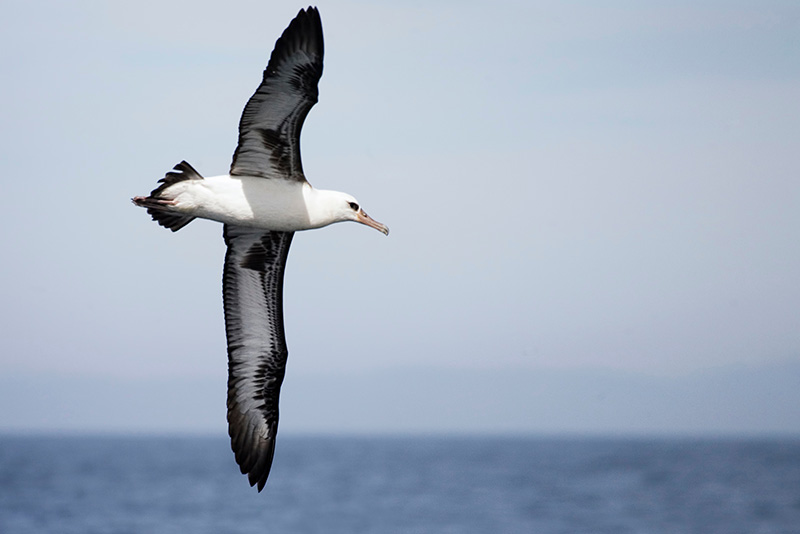
Laysan albatross (mōlī) –Phoebastria immutabilis
77”-80” wingspan. White plumage, darker shading around the eyes and base of the bill. Fleshy-colored bill with a gray tip and external tube nostrils. 99% of all Laysan albatross breed in the northwestern Hawaiian Islands. Also known as “Goonie Birds” and is best known for its gliding flight, awkward landings, and elaborate courtship rituals.
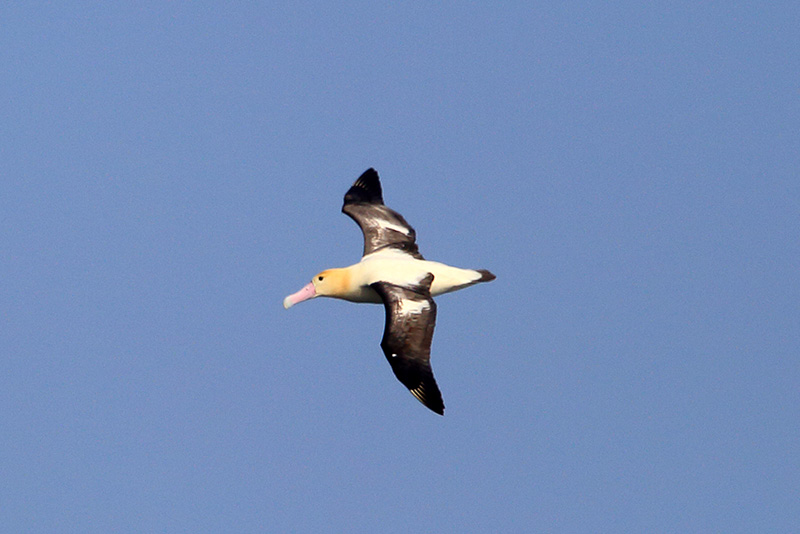
Short-tailed albatross – Phoebastria albatrus
24”-90” wingspan. Largest of northern hemisphere albatross. Bright, pink bill with tube nostrils. With a population of an estimated 1,900, this albatross is extremely rare and endangered under the United States Endangered Species Act. Breeds on only two islands in the Western Pacific near Japan. Contrary to its name, its tail is no shorter than that of the Laysan or black-footed albatross.
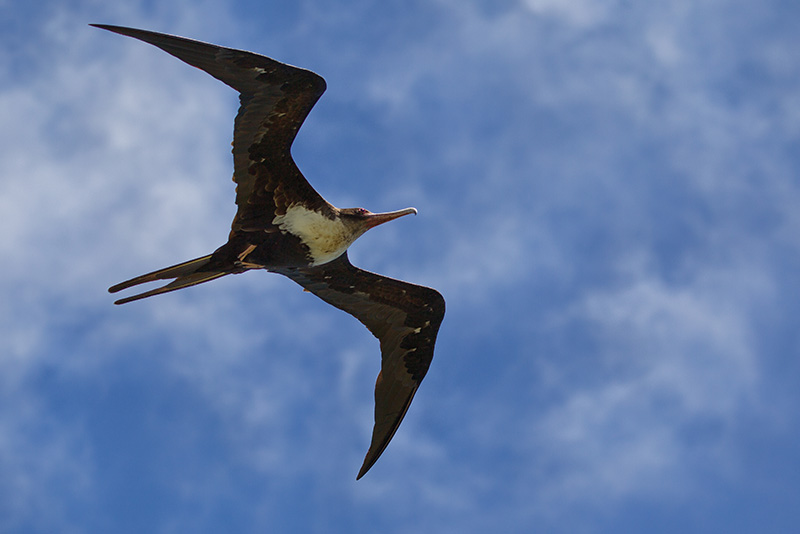
Great frigatebird (‘iwa) –Fregata minor
81”-91” wingspan. Large with fork-in tail. Agile flyers. Males have a red gular pouch that inflates to attract females. Females have a white breast and throat. Constructs their nests in shrubs or sometimes in piles of sticks that have been gathered together. Unlike other seabirds, this species does not land on water as it isn’t “waterproof” like other seabirds.

Christmas shearwater – Puffinus nativitatis
28”-32” wingspan. Medium-size bird. Always dark in color (brownish-black). Dark bill and feet. Short and rounded tail. As in other shearwaters, the legs of the Christmas shearwater are set far back on its body and it moves with an awkward, waddling gait on land, often shuffling along on its breast.
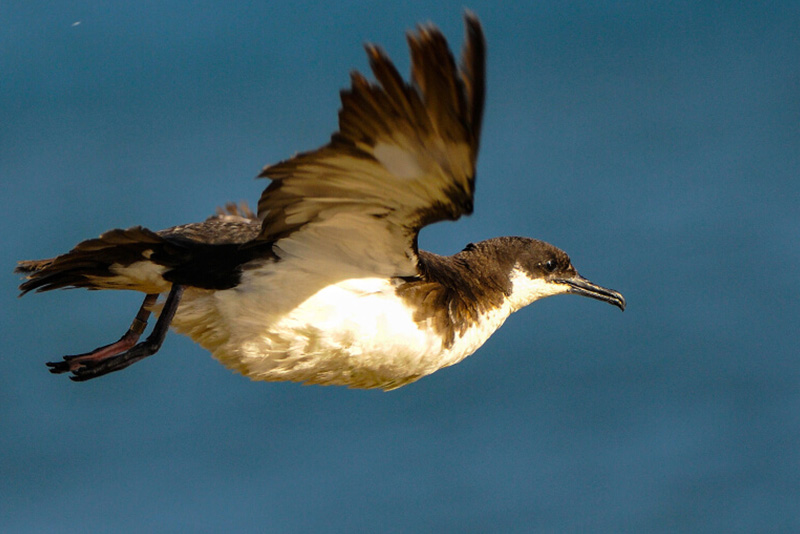
Newell’s shearwater (‘a ‘o) – Puffinus auricularis
30”-35” wingspan. Black top with a white underside. Currently endangered due to population declines caused by mammalian predation. Commonly found injured in the street due to collisions with power lines and light posts. Breeds only in the Hawaiian Islands, mainly in the highlands of Kauai. Listed as threatened under the Endangered Species Act. Is nocturnal with a call that sounds like a braying donkey.
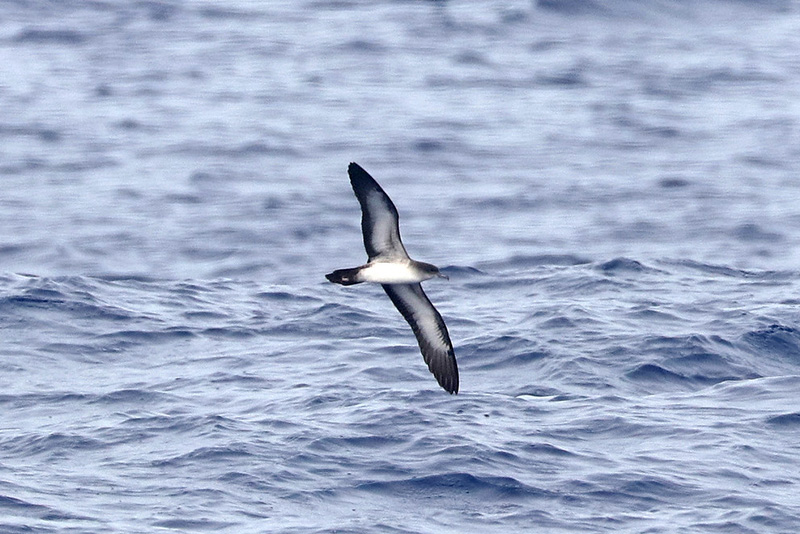
Wedge-tailed shearwater (‘ua ‘u kani ) – Puffinus pacificus
38”-41” wingspan. Dark brown to brownish-gray in color, with a light underside and a white forehead and belly. Long, wedge-shaped tail. Burrows a nest in sand or rock. Can dive to 150ʻ in the water hunting prey. Also known as the “Matori bird.” Emits an eerie, wailing call from its burrow during the night, comprising of an inhaling component, ‘OOO’, and an exhaling component ‘errr’. This ghost-like sound gives rise to the Hawaiian name for this species, ‘ua’u kani’, which means ‘calling or moaning petrel’.

Bulwer’s petrel (‘ou) –Bulweria bulwerii
26”-28” wingspan. Brown with pale, diagonal bar across bottom-side of the wings. Wedged-shaped tail, usually held at a point. Breed on rocky islets and atolls, nesting in rock crevices, rock or coral rubble, under vegetation, and man-made nest structures.
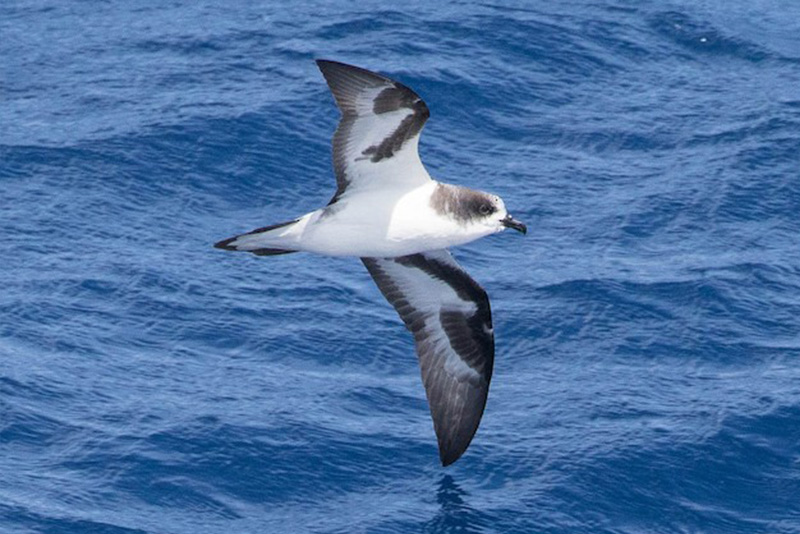
Bonin petrel – Pterodroma hypoleuca
25”-28” wingspan. Gray-black plumage on top, white on bottom. Wedge-shaped tail. Breeds on Midway, Laysan, and Lisianski Island in the Northwestern Hawaiian Islands in the greatest numbers. This seabird is a small gadfly petrel that lives in the waters of the north west Pacific and nests on islands south of Japan and in the Northwestern Hawaiian Islands.
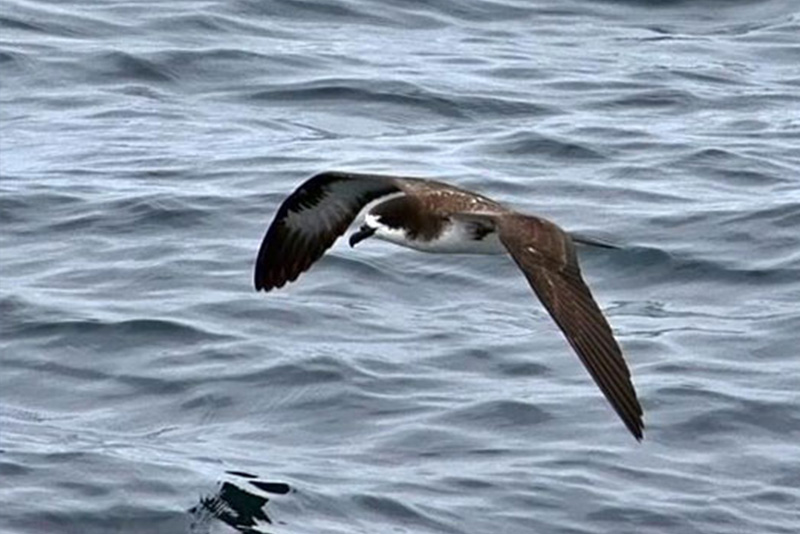
Dark-rumped or Hawaiian petrel (‘ua ‘u) –Pterodroma phaeopygia sandwichensis
36″ wingspan. Dark-gray head, wings, and tail with a white forehead and belly. Endangered due to mammalian predation and collision with man-made objects.Nests only in the highlands of the main Hawaiian Islands. Has a distinctive call during breeding season that sounds like “oo-ah-oo.” Is listed as Endangered under the Endangered Species Act and can travel up to 6,000 to forage.
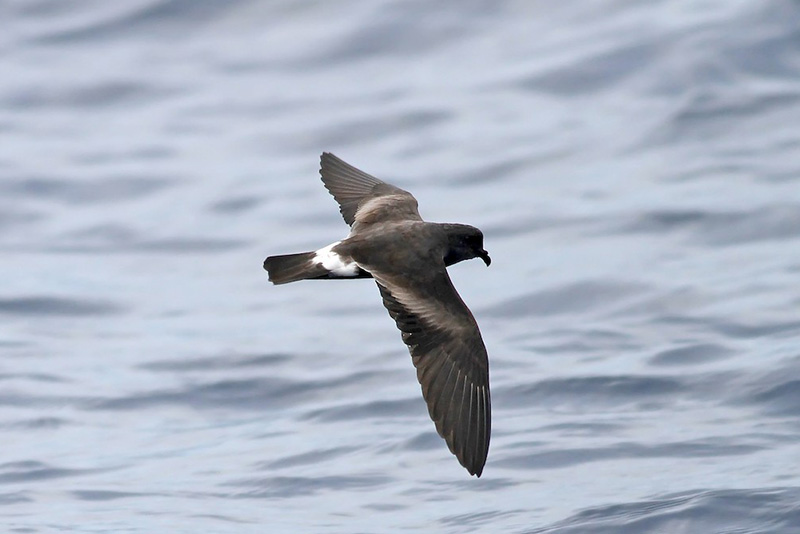
Band-rumped storm petrel (ʻake ʻake) – Oceanodroma castro
36” wingspan. Large size Storm Petrel. Listed as endangered under the Endangered Species Act. Dark plumage with a narrow, rectangular, white rump patch. Nests on steep cliffs. Slightly forked-tail. Also known as the “Hawaiian Storm Petrel.”
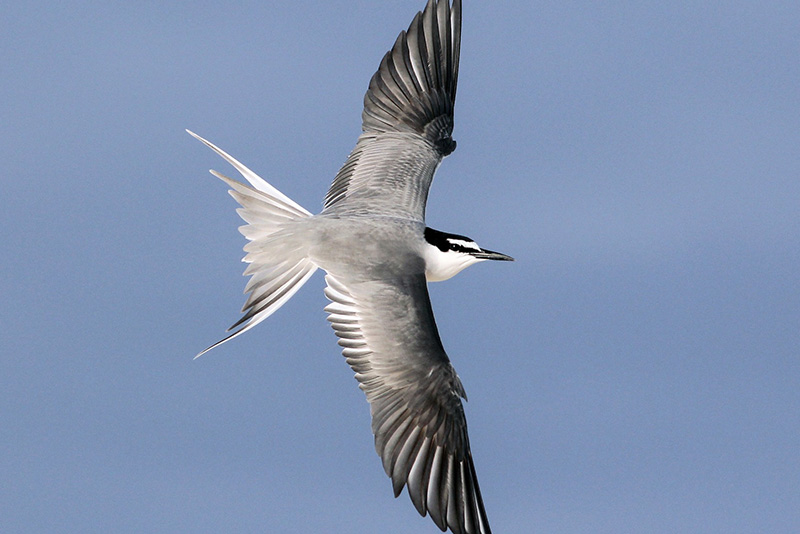
Gray-backed tern (pokalakala) –Sterna lunata
29”-30” wingspan. Confined to tropical Pacific Ocean. Gray plumage on back. Distinguished from the Sooty Tern by being smaller in size and less aggressive. Also known as the “speckled tern.” Breeds on remote islands and atolls. Nests are constructed in a variety of habitats (e.g., rocky ledges, open, sandy beaches) but usually at the base of shrubs or refuse.

Sooty tern (‘ewa ‘ewa) – Sterna fuscata
32”-37’ wingspan. Black plumage above and white below. Forked, black tail with white streamers on outermost tail feathers. Nerve racking calls gives it the nickname “wide-awake.” Can soar to altitudes of 3,000 feet and higher. Nests in large, dense colonies consisting of thousands to a million pairs of terns. Nests are shallow scrapes often lined with bits of shell or vegetation.
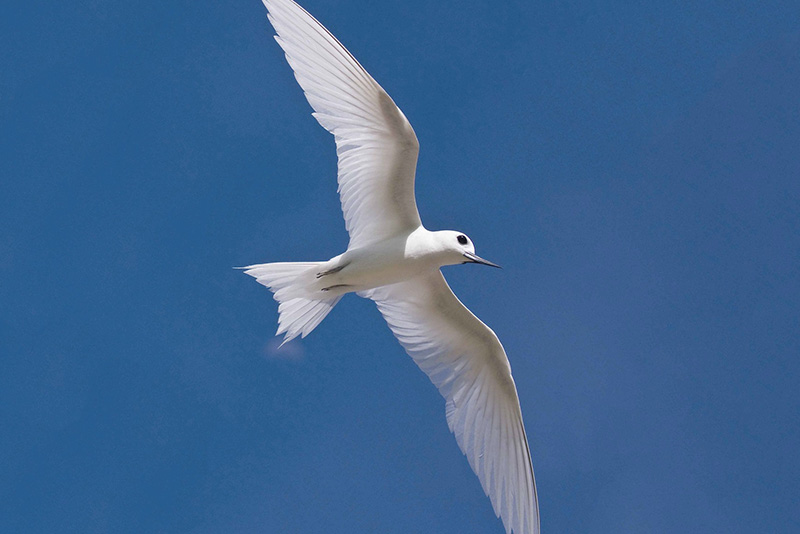
White tern (manu o ku) – Gygis alba
28”-35” wingspan. Small size. All-white plumage and black eyes. Near-shore bird seen around Honolulu. Also known as the “fairy tern.” Famous for laying its egg on a rock, a rock ledge, or a bare branch rather than in a nest. An egg laid in an exposed and precarious place results in a chick that must cling to the perch.
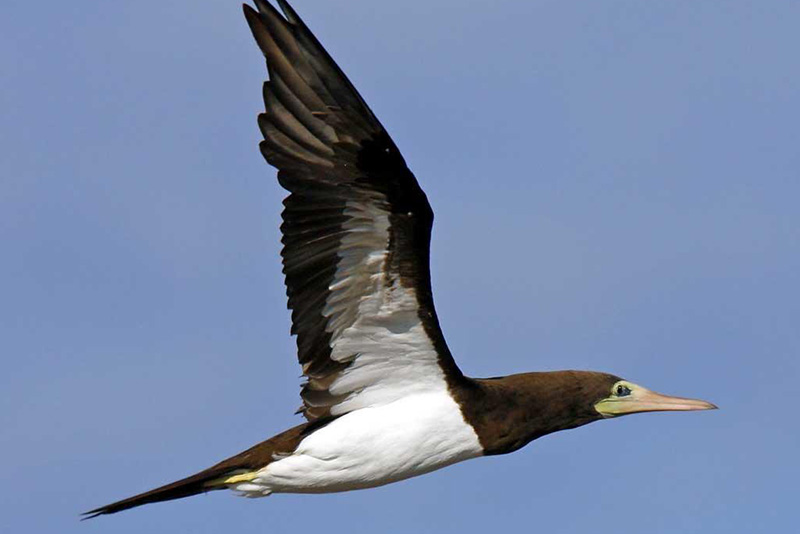
Brown booby (‘ā) – Sula leucogaster
52”-59” wingspan. Brown plumage with a white breast. Male has blue bill. Females are larger than males and have bright, yellow-green bill and feet. Feeds by flying over the ocean looking for schools of fish, and then diving like a dart, with its wings streamlined against its body.
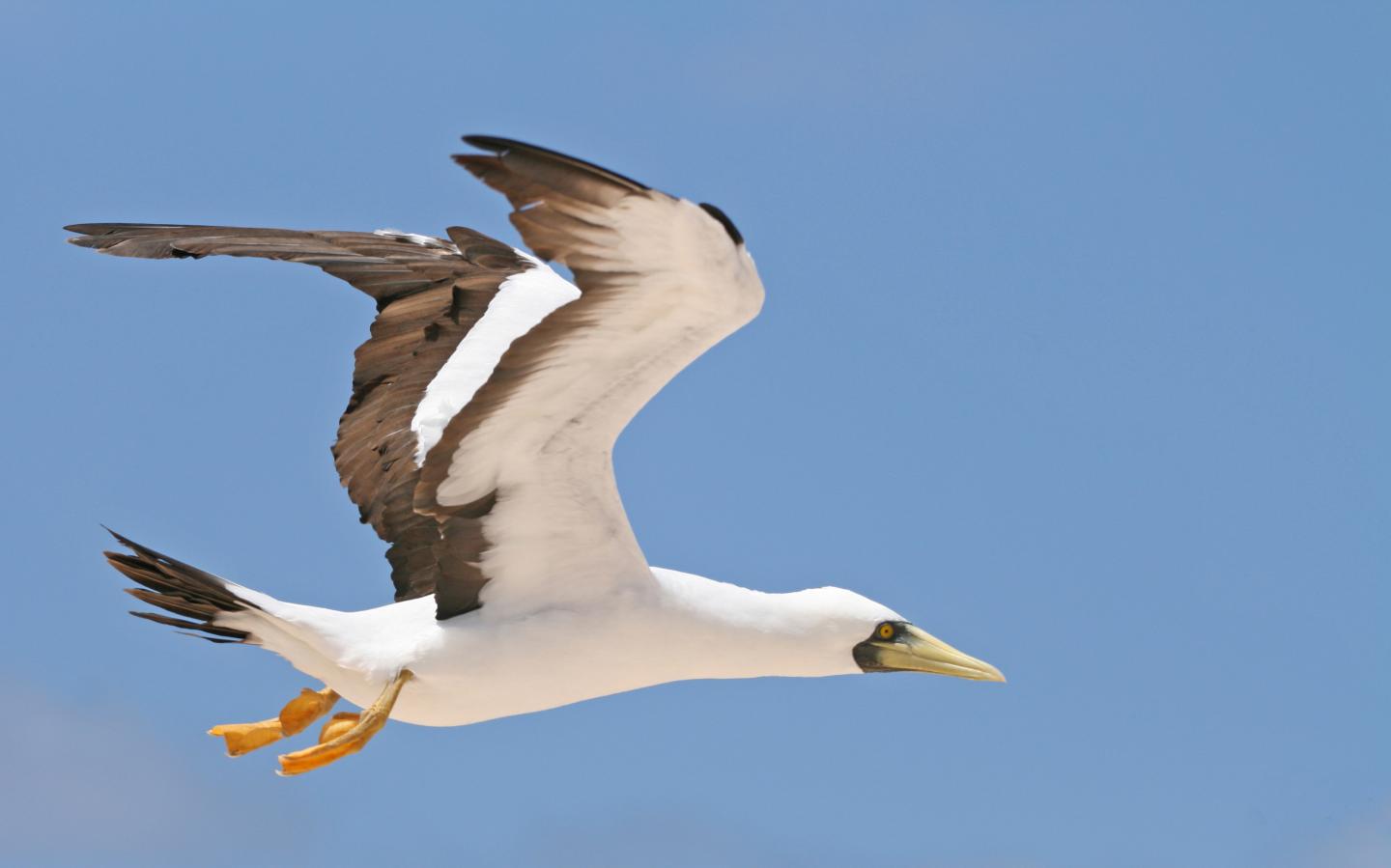
Masked booby (‘ā) – Sula dactylatra
60” wingspan. Adult birds are white with dark brown or black wingtips and a dark tail. Yellow bill and yellowish-gray feet. Female and males are similar in their appearance. Largest and heaviest booby in the tropics. Although this booby regularly lays two eggs, it never raises two young. The first egg is laid four to nine days before the second, and the older chick always ejects the second from the nest.

Red-footed booby (‘ā) – Sula sula
36”-40” wingspan. Adult birds have blue bills, red feet and a white tail. Young birds of this species are light brown with dark to pinkish bill. Tree nesting birds. Also known as the “mahi / white bird.” Well adapted for diving and feature long bills, lean and aerodynamic bodies, closable nostrils, and long wings which they wrap around their bodies before entering the water.
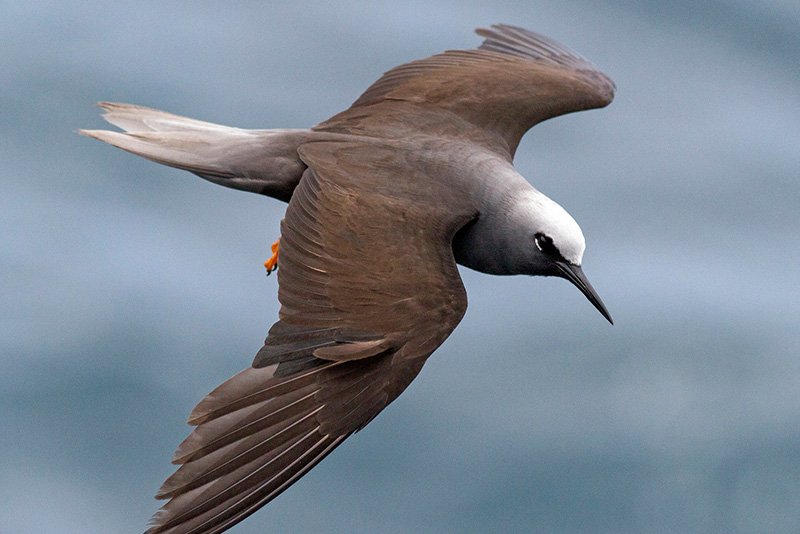
Black noddy (noio) – Anous stolidus pileatus
26”-28” wingspan. Compared with the brown noddy, it is blacker in color, with a proportionately longer and thinner bill, whiter cap and slender body. Typically remains within 50 miles of its breeding colonies year-round. Courtship consists of head nodding and fish transfers.
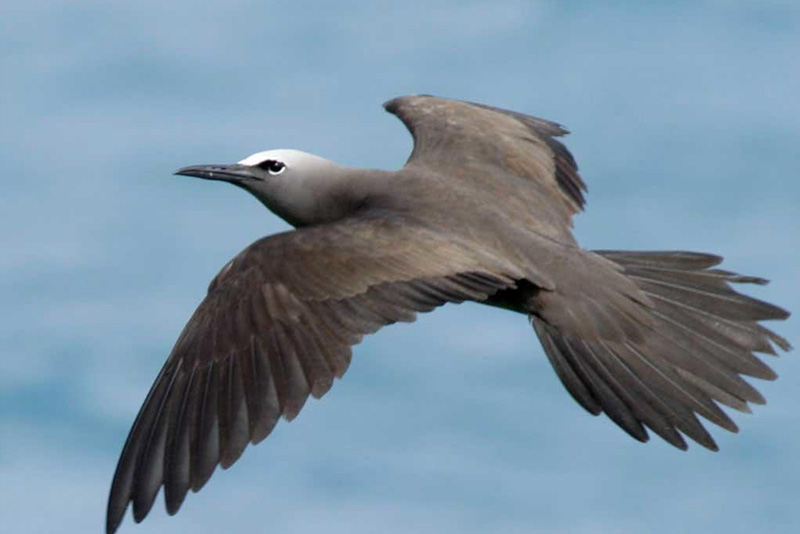
Brown noddy (noio koha) – Anous minutus
31”-34” wingspan. Compared to the black noddy, it is browner in color with a larger, stockier body. Feeds offshore over tuna schools. The largest member of the noddy family; they weigh twice as much as black noddies. Chicks reach adult weight in 18 days. Most chicks outweigh parents in six weeks.
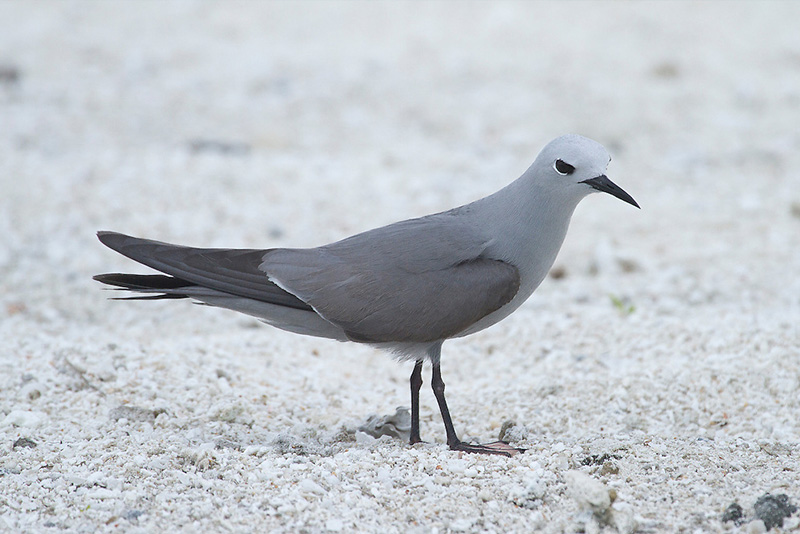
Blue noddy – Procelsterna cerulean
18”-24” wingspan. Light, blue-gray in color. Smallest tern in the world (about the size of a mynah bird). Eats sea striders and crustaceans on the surface of the ocean. Because of its small gape, this noddy is restricted to feeding on tiny fish, squid, sea-skaters and small crustaceans.
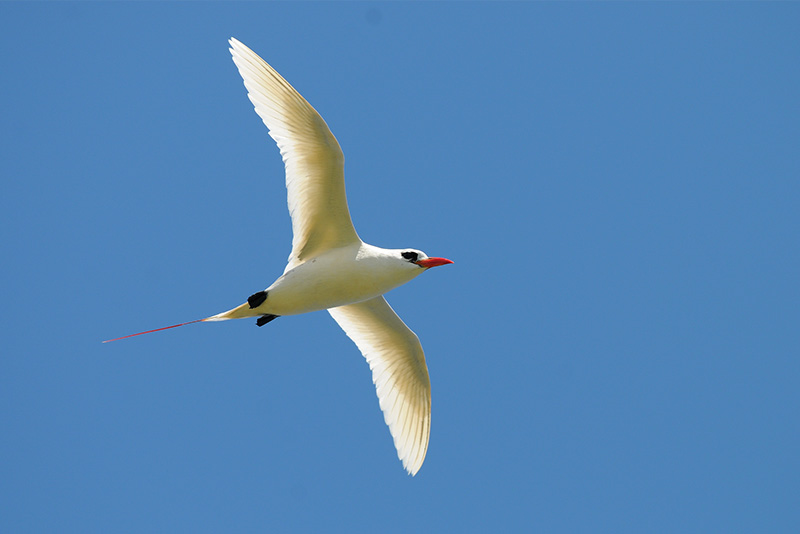
Red-tailed tropicbird (koa’e ‘ula) – Phaethon rubricauda
41” wingspan. Both bill and tail streamers are red. Black line near eye. Nests under shrubs in the northwestern Hawaiian Islands and on cliffs of offshore islands. Adult males and females are mostly white, except for partial black eye ring and short eye line, black flanks, and black shafts of outer primaries. Both sexes have long, narrow, tail feathers with red shafts.

White-tailed tropicbird (koa’e kea) – Phaethon lepturus dorotheae
35”-38” wingspan. White tail streamers are 15”-16” long, compromising half of the body. Black markings on wing. Nests on cliffs in the main Hawaiian Islands. In the air these birds exploit their long wingspan and streamlined body shape to attain impressive altitudes by soaring upwards on rising thermals.
